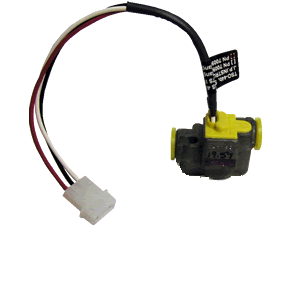 If only the Wright Brothers had the same flight instruments that are available to today’s pilots, development of powered flight would perhaps have been a whole lot faster. If only the Wright Brothers had the same flight instruments that are available to today’s pilots, development of powered flight would perhaps have been a whole lot faster.
Back then the Wright Brothers had to make do with a tachometer, a wind meter and a stop watch. Pretty amazing when you consider that today pilots have information on the aircraft’s altitude, the condition of the aircraft, components, engine, weather, current position, navigation, cabin environment, communication and a couple of dozen other things.
In fact pilots of today are almost spoilt by the sheer choices they have. Technology has advanced so fast in the last decade that the humble cockpit with its numerous analog glass dials has given way to spacecraft-like touch screen digital flight monitoring systems. Prime movers behind this leap include J P Instruments – pioneers in aftermarket aircraft digital monitoring instruments and systems.
Of course, capturing flight and aircraft information is one thing – it was done during the World War II as well. What has changed dramatically is the way the information is interpreted, prioritized and displayed. There is subtle level of artificial intelligence (AI) programmed into the erstwhile aircraft monitoring instruments.
Until a few years back, aircraft instruments used to be separated and categorized by the nature of data provided e.g. flight instruments, engine instruments, and navigation instruments. Today, the digital aircraft monitoring instruments designed and manufactured by J P Instruments are truly futuristic and present integration like never before.
Real time GPS data is optionally combined with navigation to automatically calculate flight time and fuel time. A pilot can now know the ETA to a given destination and whether the quantity of Fuel Gauges available is sufficient to cover the distance and by what margin. This information is constantly updated in real time based on actual fuel use, weather conditions, current destination etc.
The AI component of the modern Aircraft Level Sensors instrument and systems manufactured by J P Instruments also acts as a constantly vigilant eye monitoring each and every critical flight data and engine parameter. An over-the-top EGT reading is instantly brought to the forefront and flagged. The same procedure is followed for other critical sensor readings including oil pressure, turbine inlet temperature, turbine gas temperature, fuel pressure, fuel flow, fuel level and so on leaving the pilot to simply sit back and enjoy the flight knowing that the ever watchful digital eye is awake and monitoring everything. In fact, it is not just the pilot’s job being made easier; the aircraft maintenance engineer’s job too is made dramatically easier.
An aircraft cockpit with the latest Avionic Instruments and systems especially of the kind and type manufactured by J P Instruments enables the maintenance engineer to download flight data on to an external hard drive or pen drive. Special maintenance software can be used to analyse the flight data and flag out problem areas that might not be so apparent during a routine glance-over. Preventive maintenance of this kind in turn reduces the chances of critical failures happening during flight. Now, what would the Wright Brothers not have given to fly a modern aircraft with the latest digital monitoring instruments and systems?
|